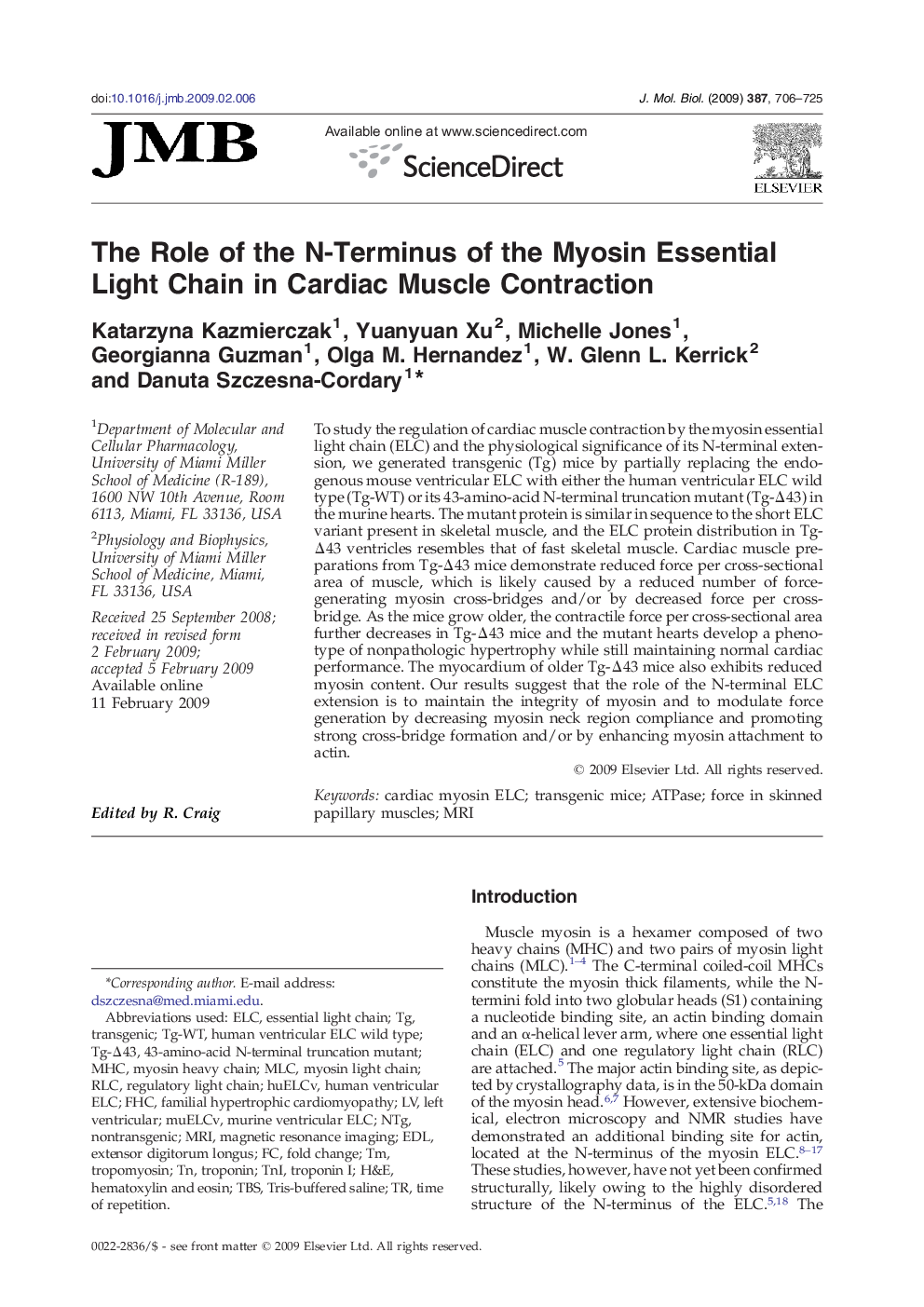| Article ID | Journal | Published Year | Pages | File Type |
|---|---|---|---|---|
| 2186661 | Journal of Molecular Biology | 2009 | 20 Pages |
To study the regulation of cardiac muscle contraction by the myosin essential light chain (ELC) and the physiological significance of its N-terminal extension, we generated transgenic (Tg) mice by partially replacing the endogenous mouse ventricular ELC with either the human ventricular ELC wild type (Tg-WT) or its 43-amino-acid N-terminal truncation mutant (Tg-Δ43) in the murine hearts. The mutant protein is similar in sequence to the short ELC variant present in skeletal muscle, and the ELC protein distribution in Tg-Δ43 ventricles resembles that of fast skeletal muscle. Cardiac muscle preparations from Tg-Δ43 mice demonstrate reduced force per cross-sectional area of muscle, which is likely caused by a reduced number of force-generating myosin cross-bridges and/or by decreased force per cross-bridge. As the mice grow older, the contractile force per cross-sectional area further decreases in Tg-Δ43 mice and the mutant hearts develop a phenotype of nonpathologic hypertrophy while still maintaining normal cardiac performance. The myocardium of older Tg-Δ43 mice also exhibits reduced myosin content. Our results suggest that the role of the N-terminal ELC extension is to maintain the integrity of myosin and to modulate force generation by decreasing myosin neck region compliance and promoting strong cross-bridge formation and/or by enhancing myosin attachment to actin.
